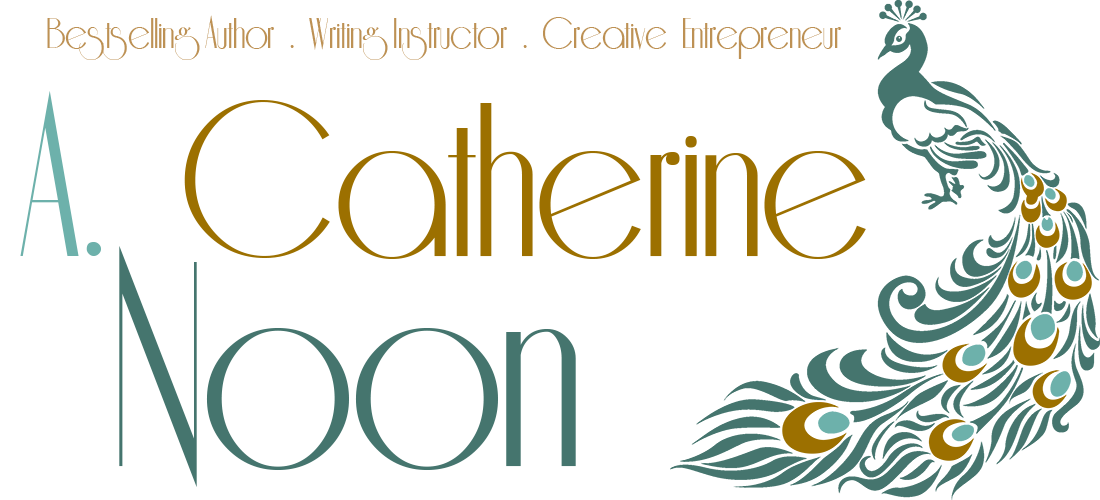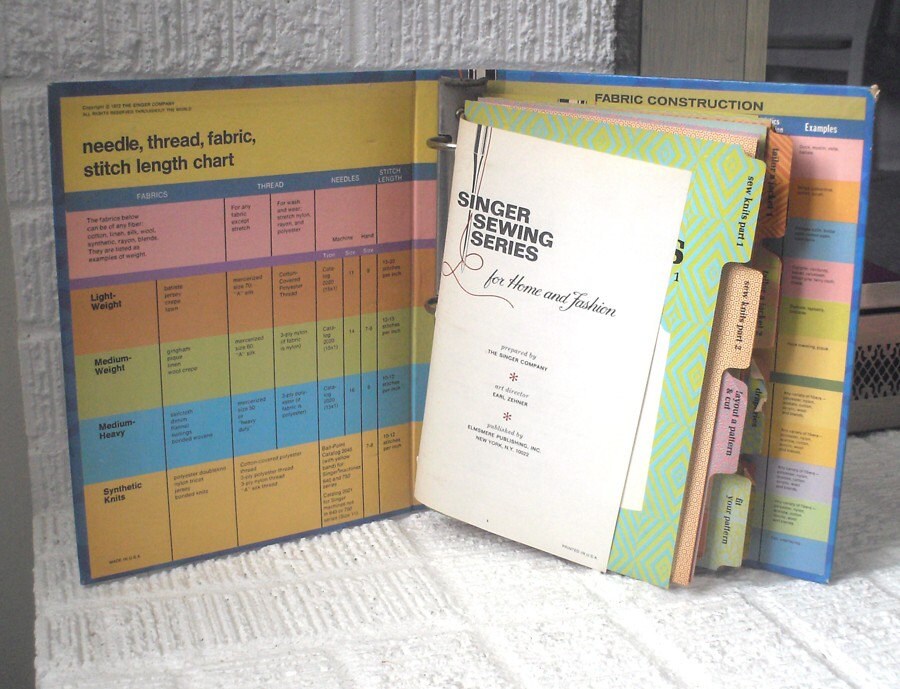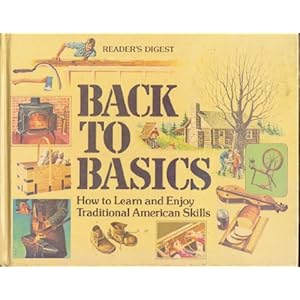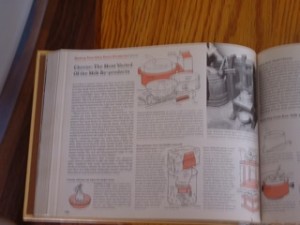A Writer In Her Library, Chapter Two
Thursday 13: A Writer In Her Library
Happy Saint Patrick’s Day! As a fourth-generation Irish American, today has special significance since my uncle, the oldest surviving Irish relative on American soil, passed away this month. Our family draws together to remember our connections and to celebrate our family ties. I wish you and yours a very happy and bountiful year! As you raise a glass in celebration, please toast to my Uncle Tom and the family of poor Irish potato farmers who have “made it good” in the new land.
Today I offer the second installment in my series, “A Writer In Her Library.” We continue with craft books today and venture out of the anthologies and into the single titles. I have an eclectic collection spanning some of the glitzy modern photo-intensive books that have little in the way of actual instruction, to those older books from the 50’s and 60’s that have a lot of instructions and much less glam. Enjoy!
1. Singer Sewing Series, Sew and Save for Home and Fashion, Elmsmere Publishing Inc, New York, 1972.
This one caught my eye at a Brandeis Used Book Sale a couple years ago. It’s a battered 3-ring binder, like the Better Homes and Gardens Cookbook, and covers all sorts of the basics of sewing. Since it’s also targeted to the thrifty home sewer, there are a lot of tips on mending and wardrobe construction.
2. The next five are all from Reader’s Digest. Some of my acquaintance don’t like the RD books because they are abridged; however, I have always enjoyed their how-to books for their depth and breadth of coverage of the topic. I remember the first time I saw a stitchery book and coveted it so badly! It took another decade before I broke down and bought one used, and I love it.
Back to Basics: How to Learn and Enjoy Traditional American Skills. Reader’s Digest Association Inc., Pleasantville, NY; 1981.
This one is a gem. It’s got all SORTS of cool stuff. The one that got my husband is ‘build your own stone house.’ Now he wants to go out and collect rocks. 🙂
3. Complete Do-It-Yourself Manual. 1973.
When my husband and I moved in together, we merged our libraries (which were both prodigious). We each had a copy of this book.
‘Nuff said.
4. Complete Guide to Needlework. 1979.
There she is!! This is my first compendium of needlework purchase, and I love it! It’s got stitchery alphabets and instructions for all sorts of crafts! I don’t always learn from 2D to 3D very well, but once I got the basics elsewhere this was a snap – and if you don’t have the whole 2D/3D problem, you’re set.
The interesting thing about this one, is that it has sections on both macrame and lace (including bobbin lace and tatting), which after about 1985 is not something you see much of.
5. Crafts and Hobbies. 1979
JACKPOT! This is awesome. The breadth of crafts included here is staggering, and almost rivals the Family Creative Workshop – and this is only one volume! It goes from Drawing to Enameling to Preserving Fruit, all in the same book. Who needs a television with this thing around??
6. Fix-It-Yourself Manual. 1977.
This is a good book to have around if you own your own home or do your own repairs. It’s got oodles of advice for how to handle common household problems, and includes a section on Furniture Repair that’s exceedingly useful.
7. Better Homes and Gardens Sewing Book: Sewing How-To For Home and Family. Better Homes and Gardens Books, 1981.
This is an excellent resource. I’m wondering if I have a typo in my bibliography, because what I found online was 1961 where the cover matched my recollection. Either way, this is an excellent sewing book. It covers adjusting patterns and making fitting fixes better than almost any other sewing book I own. I highly, highly recommend this if you are serious about sewing garments for yourself or others.
8. Jefferys, Chris; Learn to Sew: A Beginner’s Guide. New Holland Publishers Ltd, London, Cape Town, Sydney, Auckland; 2005.
I really like this one. It’s big and has very clear pictures. The projects, as you can see from the Table of Contents below, are broad-ranging and non-repetitive, but cover all the basics you need to develop a good basis for making your own garments or soft furnishings for the home.
I love the Silverware Roll; that seems like a fun gift for the holidays. The Table Runner with Mitered Border is beautiful and I like the zippered bags. I find zippers intimidating, and the idea of making several small bags to practice seems wise.
9. Oops! Missed a Reader’s Digest. I have it in a different spot on the shelf because it’s in a different format than the ones I listed above; I simply included it in the single titles on the shelf.
Step-by-Step Sewing Course: Essential Techniques for Making Over 150 Creative Home Projects. 2005.
I couldn’t resist the cover.
I’m shallow. ~shrug~
I really want to make that bolster! Maybe this will be the year. From the book jacket:
“Learn to sew and make beautiful gifts and decorator-style custom furnishings for your home with the Step-by-Step Sewing Course. This handy guide is filled with more than 150 projects and variations for beginner, intermediate, and advanced sewers, complete with clear, easy-to-follow, illustrated instructions that lead you through each project, one step at a time. Along with vital information about essential sewing equipment and basic techniques, you’ll discover how to make…: Quick and easy bedspreads, Tablecloths with lace panels, Decorative window treatments for every type of window, Shower curtains and bath mats, Pillows with romantic ruffles, Duvet covers, Padded fabric headboards, Gift bags for special occasions, …and so much more! “
10. Simplicity, Simply the Best Sewing Book: Revised Edition. Simplicity Pattern Co., Inc., New York, 2001.
This was the recommended book for Veronica Brackett’s excellent sewing courses at Vogue Fabrics in Evanston. If you ever get a chance to take one of her classes, DO IT. She’s the single best sewing instructor I have ever met.
The book is good. It starts with your sewing philosophy (do you want to sew simple and buy complicated? Or spend time sewing complicated and buy simple?) and goes through basics. It’s even got a selection of basic patterns to get you started.
11. Singer, Sewing Step-by-Step. Cy DeCosse Incorporated, Minnetonka, MN, 1990.
I like the Singer books. They good, solid, basic, and I have a Singer machine so the instructions are targeted for my equipment.
12. Vogue, Vogue Sewing Book. Butterick Publishing Company, New York; I have two editions – 1975 and 2000.
The 1975 has a section on menswear and is much more in-depth. The 2000 eliminated the menswear section (and it’s only been this year that I’ve started to see men’s patterns making a comeback on the pattern sites) and is a lot more sparse on the instruction. Still, this is a classic reference and well worth having on the shelf.
The Table of Contents, below, is from the current edition but is substantially similar from edition to edition.
13. And now we switch gears into the Knitting Reference section. This is distinct from the Knitting Patterns section, in that the material here covers the basics in how to knit or includes various stitch guides like the Walker books and the Vogue Stitchionaries.
This first one is a surprising find, to me anyway, because I’d already purchased my reference books for knitting and didn’t think I needed any more. I’ve since learned that Debbie Bliss is a knitting luminary and well worth taking a look at her work; this book is no exception. Truly an excellent resource.
Bliss, Debbie, How to Knit. Trafalgar Square Publishing, North Pomfret, VA, 1999.
In looking at this today, I realize that I should crack it open and review the section on colorwork, since I’m working on an intarsia (color block) project that’s proving a bit of a challenge. ~glee~
Thank you for visiting today, and I hope you’ve enjoyed this glimpse into one writer’s library. Happy TT!


















Amazing! I\’m impressed.
Great books! I\’m so not a needle and thread girl! LOL!
*hugs*
Paige
My TT is at http://paigetylertheauthor.blogspot.com
Every now and then I think I need to take a sewing class, just so I *can* sew (more than buttons and overhand). I don\’t think I\’d ever do as much as this, but these do all sounds like great references for you! Thanks for sharing!!
I have a copy of that Better Homes and Gardens sewing book.
Great idea for a T13. I have some of my grandma\’s sewing and needlework books from the 30\’s – 60\’s.
Happy T-13 & St. Patrick\’s Day!
Boy, this puts me in the mood to sew. I have a victorian bustle dress I want to make for a steampunk thing in late April.
I have a couple of the Reader\’s Digest ones in my bookcase. I don\’t get a lot of time to sew these days.
Oooh… More sewing! I think the universe is trying to tell me something. Again. 😉
I admire anyone who can glean info from craft books. The only \”how to\” books I\’m able to use are cook books and even those give me trouble at times.
Very cool library.
I wish I were better with the sewing machine than I am. About all I can manage are simple straight edges like those used for pillows or backing a cross-stitch project like a banner I did a few years ago. Your craft library amazes me!
You have so much good craft stuff to look at. I am currently struggling to make a birthday card. Sigh. I need to get craftier, I guess!